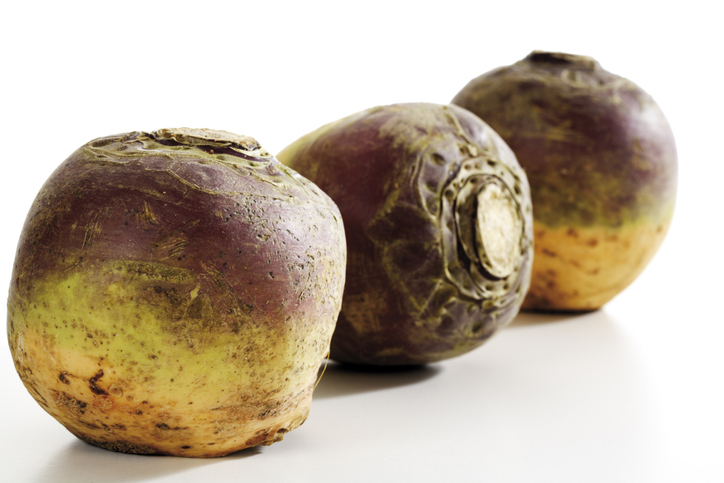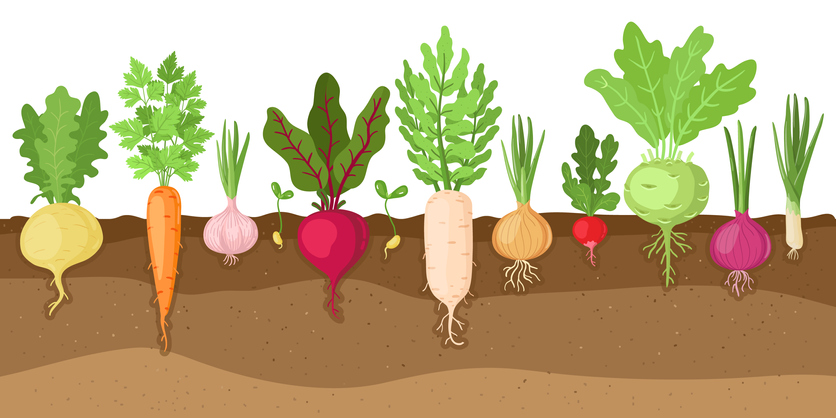Rutabagas Are Healthy, But You May Want to Eat In Moderation (Along With Other Root Veggies)

By Joy Stephenson-Laws, JD, Founder
Knowing how to eat is just as (if not more) important as knowing what to eat. It's common knowledge that whole, unprocessed foods, such as fruits and vegetables, are far more healthier than nutrient-void, processed foods.
I do, however, believe that many are unaware of how important it is to also know how to properly portion certain plant-based foods.
You may be surprised to hear that some root vegetables (such as beets, sweet potatoes, turnips, carrots, parsnips and rutabagas) should be approached like some of the carb-heavy foods we often refer to as “comfort foods.”
"They are so high in carbohydrates that they are more like grains than greens. It makes more sense to put them in the same category as breads, rice, or pasta," according to Teresa Fung, a dietician and adjunct professor in the nutrition department at the Harvard T.H. Chan School of Public Health.
In no way does this mean that eating a cup of beets is exactly the same as eating a cup of pasta (especially if nutrient-stripped white pasta). I am also not demonizing root veggies (they have a lot of benefits) or carbs in general (they are one of the six basic nutrients you need to live, along with water, protein, fats, vitamins and minerals). I just want people to know how to portion their plate based upon their personal nutritional needs. Depending on factors such as age, sex, activity level and having certain health conditions (for example, type 2 diabetes), some people need more or less carbs than others.

We tend to eat leafy greens without measuring the amount, which is fine because they are very low calorie, extremely nutrient-dense and have very little carbs. Although root veggies are also very rich in nutrients and still a veggie, it is best we proportion them and perhaps not pair them with other carbs such as rice, bread and pasta.
With that said, I recently came across rutabagas at my local farmer’s market and was intrigued. I had never prepared this less popular, compared to beets, carrots and sweet potatoes, root veggie.
Also called Swedish turnips, rutabagas belong to the cabbage family. Their peak season is September through June. Rutabagas are believed to be a cross between a turnip and a wild cabbage. According to Britannica, rutabaga was first bred in Russia or Scandinavia during the late Middle Ages.
Fun Fact: Rutabagas are said to have been the original Jack-O-Lanterns before pumpkins.
Some health benefits of rutabagas:
- This root veggie is high in vitamin C. This vitamin helps protect the immune system from deficiencies that may lead to cardiovascular illnesses and other diseases. It is one of the most important nutrients needed for our survival. It is also an antioxidant, which means it protects our bodies from free radicals and other harmful molecules. It is a major producer of collagen, which is the main ingredient behind the repair of bone and skin tissue, cartilage, ligaments, tendons and teeth. Vitamin C also helps moisturize and nourish the skin, which may increase skin elasticity and may even restore a youthful appearance.
- They also have vitamin A, which is great for eye health. “Vitamin A is critical for vision as an essential component of rhodopsin, a protein that absorbs light in the retinal receptors, and because it supports the normal differentiation and functioning of the conjunctival membranes and cornea,” reports the National Institutes of Health (NIH). Vitamin A also plays a role in immune function, reproduction, cellular communication and maintaining healthy skin and mucous membranes.
- Rutabagas have a lot of fiber. Studies have shown that eating more fiber can improve the life expectancy of people with diabetes (both type 1 and type 2).
- They are also a good source of magnesium. Magnesium is a mineral and one of the most important nutrients our body needs to stay healthy. It is responsible for many processes and reactions in the body. For example, it influences heart muscle energy production, keeps calcium levels balanced, loosens up tight blood vessels, reduces inflammation and keeps the electrical activity in the heart behaving properly.
- As well as potassium. Potassium is an essential mineral that works with sodium to balance the fluid and electrolytes in the body. Potassium also helps keep blood pressure under control and may help reduce kidney stones and bone loss as you age. It may even reduce the risk of stroke.
- Calcium is another essential mineral found in rutabagas. Calcium is critical for strong bones as well as helping your heart, muscles and nerves function properly. Adequate calcium may also decrease the risk of developing colorectal cancer.
- Because rutabagas belong to the cruciferous family, they contain glucosinolates. These sulfur-containing chemicals are known to have anti-cancer properties.
Fun fact: Rutabagas can last in your crisper drawer for one month! You do not have to fear them spoiling within a few days like some produce.
How to prepare rutabagas:You can treat them very much like you would a sweet potato. Simply peel and cut. Grated, raw rutabaga is such a nice addition to salads for added flavor, texture, color and, of course, more nutrients. Rutabaga is also great for pickling, and when veggies are pickled this provides an excellent source of probiotics. I am interested in this rutabaga fries recipe for when I’m craving French fries. The possibilities are really endless.
As always, talk to your doctor or a competent healthcare professional when it comes to introducing new foods to your diet. This is especially important for people with existing health issues or if you are pregnant or breastfeeding.
Please let us know if you are familiar with preparing and eating rutabagas.
Enjoy your healthy life!
Disclaimer: This article is not intended to provide medical advice. Please consult with your doctor or another competent healthcare practitioner to get specific medical advice for your situation.
The pH professional health care team includes recognized experts from a variety of health care and related disciplines, including physicians, attorneys, nutritionists, nurses, and certified fitness instructors. This team also includes the members of the pH Medical Advisory Board, which constantly monitors all pH programs, products, and services. To learn more about the pH Medical Advisory Board, click here.







